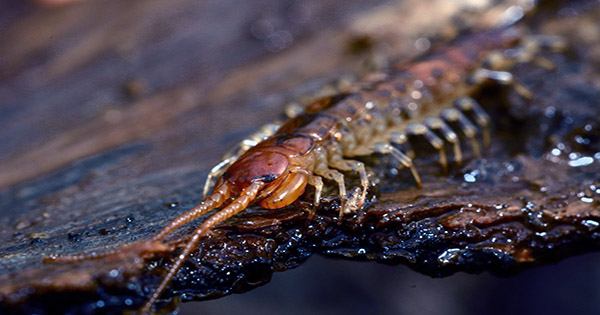Giant bird-eating centipedes may sound like a science-fiction movie-but they aren’t. On the tiny island of Philip, part of the Norfolk archipelago in the South Pacific, the population of Philip Island Centipede (Cormocephalus corner) can kill and eat 3,700 seabirds each year. And it’s completely natural. This unique animal native to Philip Island has a diet that includes unusually large portions of vertebrates, including seabirds.
As large marine predators, sea birds usually sit at the top of the food chain. But our new study, published in The American Naturalist, found that this is not always the case. We show how large, predatory arthropods can play an important role in the food ecosystem of the island’s ecosystem. And Philip Island Centipede achieves this through its highly diverse diet.
These centipedes can grow up to about one foot (or 30.5 cm) in length. It is equipped with powerful venom that is wrapped in two finisher-like appendages known as “foreskins,” which it uses to destabilize its prey. Its body is protected by an armored plate-like shield that lines each of the many parts that make up its length. On warm and humid nights, these harshly nocturnal arthropods prey on the dense leaf litter, roaming a labyrinth of chilly seabirds at the bottom of the forest.
A centipede on prey uses its two super-sensitive antennas to navigate as it seeks prey. Centipedes prey on unexpectedly diverse minerals ranging from cricket to seabirds, geckos, and skins. It even hunts fish – sea birds call it black nodes (Anous minute) which nest in the trees above.
Shortly after we began our research into the ecology of the sinking seabirds of Philip Island, we discovered that the young of the black-winged Petrel (Pterodroma nigripennis) were being hunted by Philip Island centipedes. We knew this needed further investigation, so we set out to unravel the mystery of the eating habits of this giant arthropod.
To find out what these centipedes were eating, we studied their feeding activities at night and recorded the prey species they targeted. We observe patrol babies every few days for months at a time.
From our observation rate, we calculated that the centipede population of Philip Island could kill and eat 2,109 to 3,724 pet babies per year. The black-winged patrol-which has 19,000 breeding pairs on the island, seems to be resilient to this level of prey.














